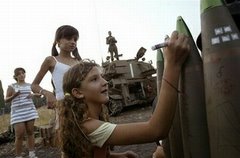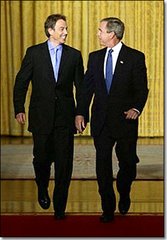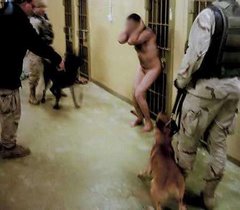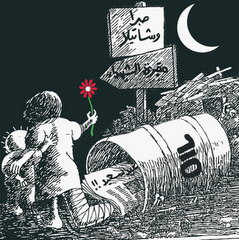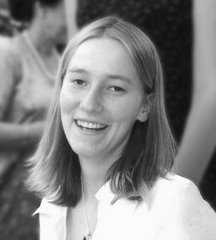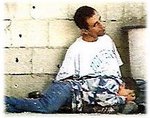Al-Tantura: a massacre denied for more than fifty years
By Ramzy Baroud
Israel's history is based on two strategies: denial of actual history, and defaming those who deny Israel's twisted version of history. Yet throughout its long history of denial, empowered by highly-trained professionals capable of enlightening the world on anything but the truth, even Israel sometimes manages to admit some of its wrongdoing. Such unusual confessions are resented by most Israelis, who fear that the unveiling of their dark secrets will shake the image of the victim which they have fought so long and hard to establish. Although the reasons for its occasional confessions are unclear, it is vital not to let such disclosures go unconsidered, because they might shed light on many more stories, which have been always denied.
When Israeli historian Teddy Katz began his historical research at the University of Haifa, the last thing he wanted to find was a massacre that his country committed against unarmed Palestinians in a northern village named Al-Tantura during the 1948 Jewish occupation of Palestine. What was even more astonishing for Katz was the fact that the number of victims was greater even than the number killed in what was previously known as Israel's worse massacre in Palestine, Deir Yassin.
The findings, which were first published by the Israeli newspaper Ma'ariv, were little more than shocking for most Palestinians, for they have witnessed even worse massacres in the years since the establishment of the Jewish state. Israeli society, however, is divided in its response, and as always the division is not even. The government, main army sources, major newspapers, and most Israelis refuse to believe that their "humane army" could commit such an act. The minority who apparently believed the "discovered massacre" were filled with shame that their prosperous and comfortable lifestyle was built on the blood of innocents. As always the split was clear: some hid in shame while others utterly denied the allegations.
Al-Tantura, a village of 1,500 people, sat gently on a hillside overlooking the beautiful scenery of northern Palestine, the rich land and the captivating sea. After a Jewish gang seized control of the area, and in the matter of a few hours one night, the village population was reduced by more than 200 men, women and children.
By dawn, the village was empty; those who had not been killed had fled. Frightened, with no food and little else, Al-Tantura villagers ran north, south, east and beyond the sea.
74-year-old Fawzi al-Tanji was one of those who miraculously survived the massacre. Fawzi, who fled the village with the few that remained of his family, has lived as a refugee since that day, with a broken spirit and a story that very few truly believed. Fawzi was interviewed by the Israeli newspaper, Ma'ariv. As soon as he was asked to revive the memory of the massacre, the old man began to sob. "They took us to the village graveyard," he said, referring to troops of the Jewish gang. He went on, "They lined us up in several rows. A Jewish commander came and ordered his troops to pick ten. They did and the chosen ten were lined up beside the cactus plants and shot. " He added, "They came back and chose another ten to remove the bodies of the murdered ten and then they themselves were killed." Fawzi lamented "Oh, how I wish I was also shot that day. It would have been much easier than living with the pain all these years."
Abdallraziq al-Ashmawi, another survivor of the massacre, told the story of how he lost 12 members of his family who were all shot on the doorsteps of their homes. Al-Ashmawi, now 64 years old, also described how more than 25 men were lined up front of the village mosque and shot by Jewish troops.
The Palestinian villages had heroically resisted the troops and fought in defence of their land with all the means they possessed. Despite their bravery and sacrifice, the villagers were defeated, for their knives and their few old rifles were no match for the well-armed, well-trained invaders. When the battle was over, the massacre began. According to a Palestinian eyewitness testimony documented by Katz, after the line-up killings, troops roamed the streets and shot everything that moved.
Colonel Bints Frieden, who led the Jewish gangs in al-Tantura and was later promoted to lead a larger Israeli army unit, admitted to the killings, justifying them by saying that those who were killed in the street had no signs on their backs saying that they were not going to shoot at the Israelis. "This is what happens when a battle breaks out in a residential area," he said. Colonel Frieden claims that he did not realize that those who defended the village were the village inhabitants themselves, not a group of outsiders seeking protection and a place to hide.
Many claim that all al-Tantura's residents became refugees. Yet Teddy Katz's research has concluded that over two hundred residents are still buried in mass graves. Those who once watered the rich land have remained to enrich its soil with their blood. Above these mass graves now stands a kibbutz and a large parking lot, paved so that Israeli beach lovers can enjoy what al-Tantura's residents once enjoyed: the rich land and the captivating sea.
Once upon a time there was a village that we all must remember. There were heroes who defended our honour; they must also be remembered. If we let go of such memories, and those of the other 417 villages that were savagely 'cleansed' of their communities, our future generations might never know that the Israeli kibbutz and the large beach parking lot in that very special place was once a village, a Palestinian village named al-Tantura.
Muslimedia: February 16-29, 2000
Friday, September 11, 2009
Subscribe to:
Comments (Atom)




